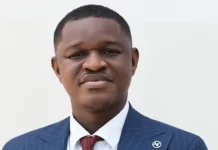By Kestér Kenn KLOMEGÂH
Russian Foreign Minister Sergey Lavrov has offered an increased military partnership during the latest bilateral talks held on 28 February 2024, with his Malian counterpart Abdoulaye Diop in Moscow. The significance of Russian support is largely directed at fighting terrorism and enhancing the combat effectiveness of the Malian army and law enforcement agencies, including the training of soldiers and police officers.
The Economic Community of West African States (ECOWAS), the regional bloc, had previously suspended the membership of Mali following military coups in August 2020 and May 2021, the ruling military officials are still holding onto political power by delaying the proposed elections in country. Late February, Mali was re-admitted back into the ECOWAS.
The interim military government has maintained a well-developed multifaceted nature of bilateral relations with Russia since the military ascended into political power. That was a great beginning with the interim military government. But for thirty years, after the collapse of the Soviet era in 1991 until the first Russia-Africa summit (October 2019), Russia turned its back to many African countries. Due to the current geopolitical changes, Russia is now back to Africa.
Russian leader Vladimir Putin and Mali’s Interim President Assimi Goita held diplomatic talks, to review various aspects of strategic partnership deals, on the sidelines of the Russia-Africa Summit in St. Petersburg in July 2023. Russia reaffirms its readiness to render Mali extra-ordinary support in raising the fighting efficiency of its armed forces.
With the final exit and the vacuum created by France, Russia now sees Mali as an excellent conduit to penetrate into the Sahel by pushing the much-criticized Wagner Group that organizes private military for countries in conflict. It is aggressively targeting the Sahel region, an elongated landlocked territory located between north Africa (Maghreb) and West Africa region, and also stretches from the Atlantic Ocean to the Red Sea.
At that St. Petersburg summit, Putin also unreservedly promised Mali free grains and free fertilizers. “Mali is grateful to Russia who keeps its word and provides assistance by sending humanitarian aid. This includes the export of Russian wheat, fertilizers and diesel fuel,” Lavrov underlined at the press conference.
Food security is an important aspect of bilateral cooperation. In particular, Russia delivered 25,000 metric tons of free grain to Mali in the past few months. In July 2023, Moscow allocated $2 million to purchase another food shipment for Mali through United Nations institutions.
Malian Minister of Foreign Affairs and International Cooperation Abdoulaye Diop explained that “cooperation with Russia has contributed to ensuring security, the potential has been strengthened, and we can see results.” Diop also called for diversifying ties, in particular in the economy, as he said that a good relationship should be accompanied by good trade and economic cooperation.
On the economic front, Lavrov added: “We affirmed mutual interest in holding a meeting of our respective economic bloc agencies to consider practical steps for implementing the decisions reached during the two visits to Moscow last year by delegations of Malian experts in such areas as the implementation of projects with the participation of Russian companies in geological exploration, development of mineral reserves, transportation, infrastructure, energy, agriculture, information technology and much more.”
The Republic of Mali, home to nearly 20 million people, is a landlocked country located on rivers Senegal and Niger in West Africa. As a former French colony, it persistently faces serious development challenges primarily due to its landlocked position and it is the eighth-largest country in Africa. Over the years, reform policies have had little impact on the living standards, the majority are highly impoverished in the country. As a developing country, it ranks at the bottom of the United Nations Development Index (2020 report).










